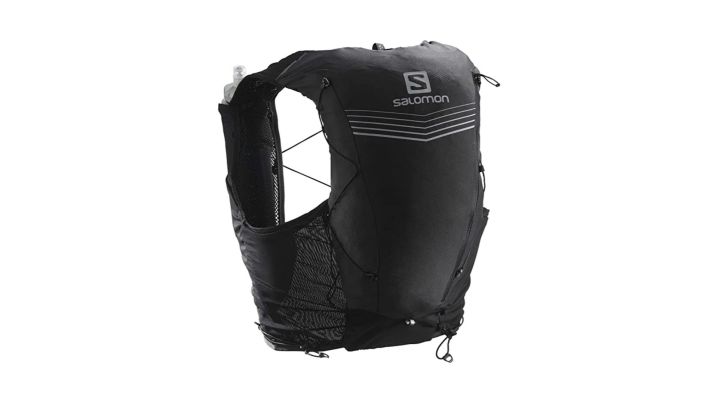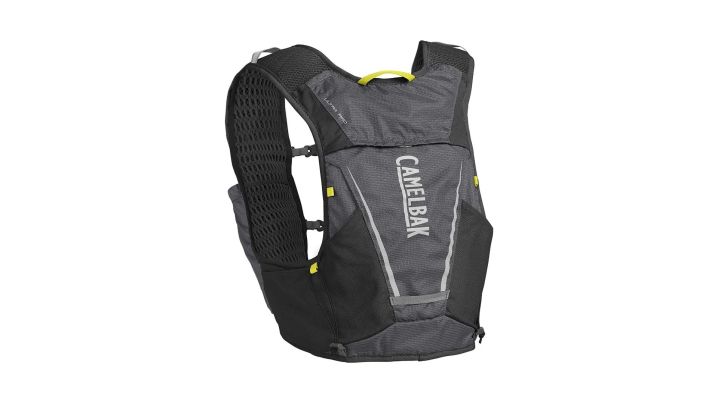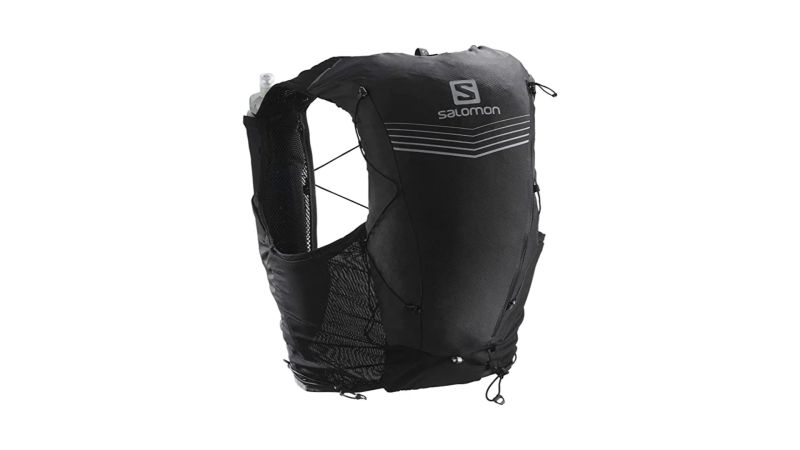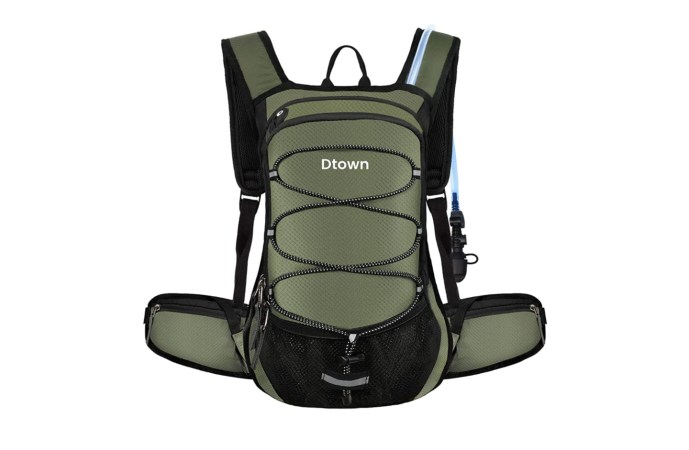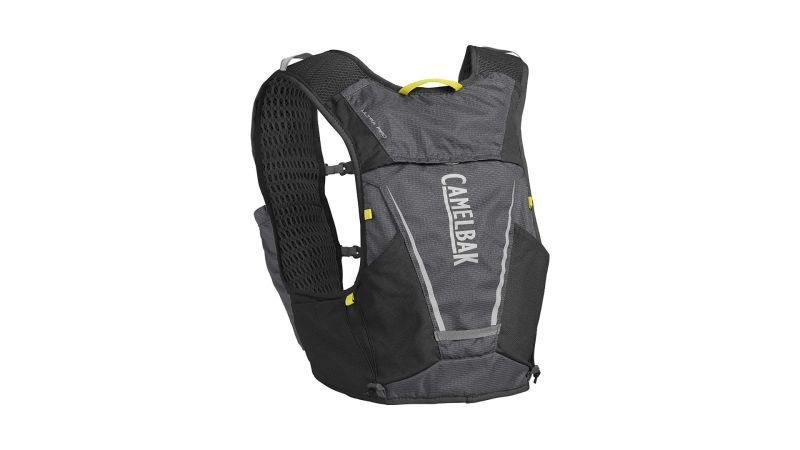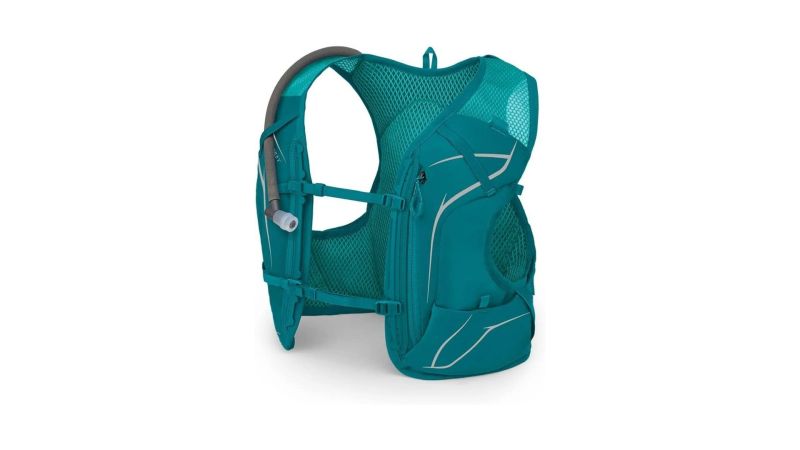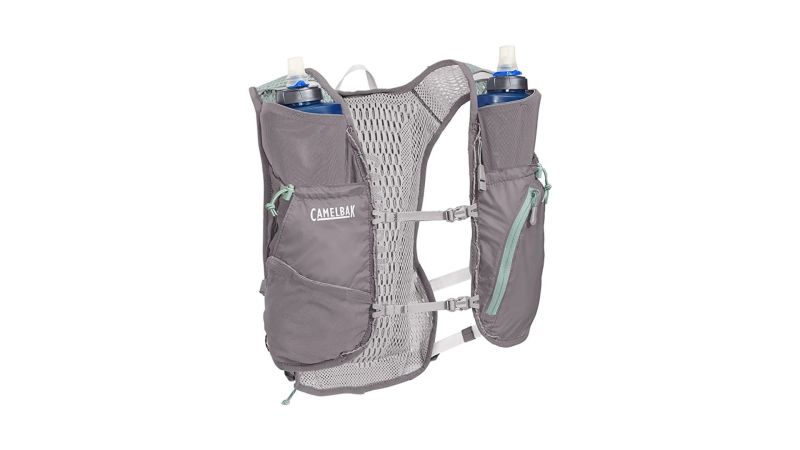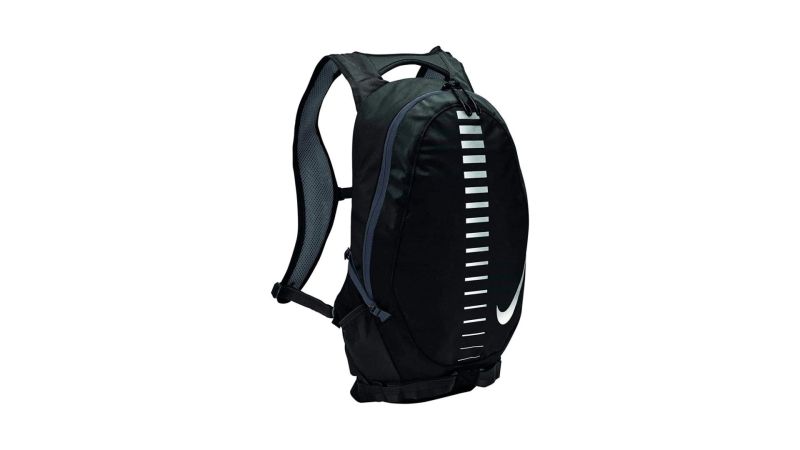We may earn revenue from the products available on this page and participate in affiliate programs.
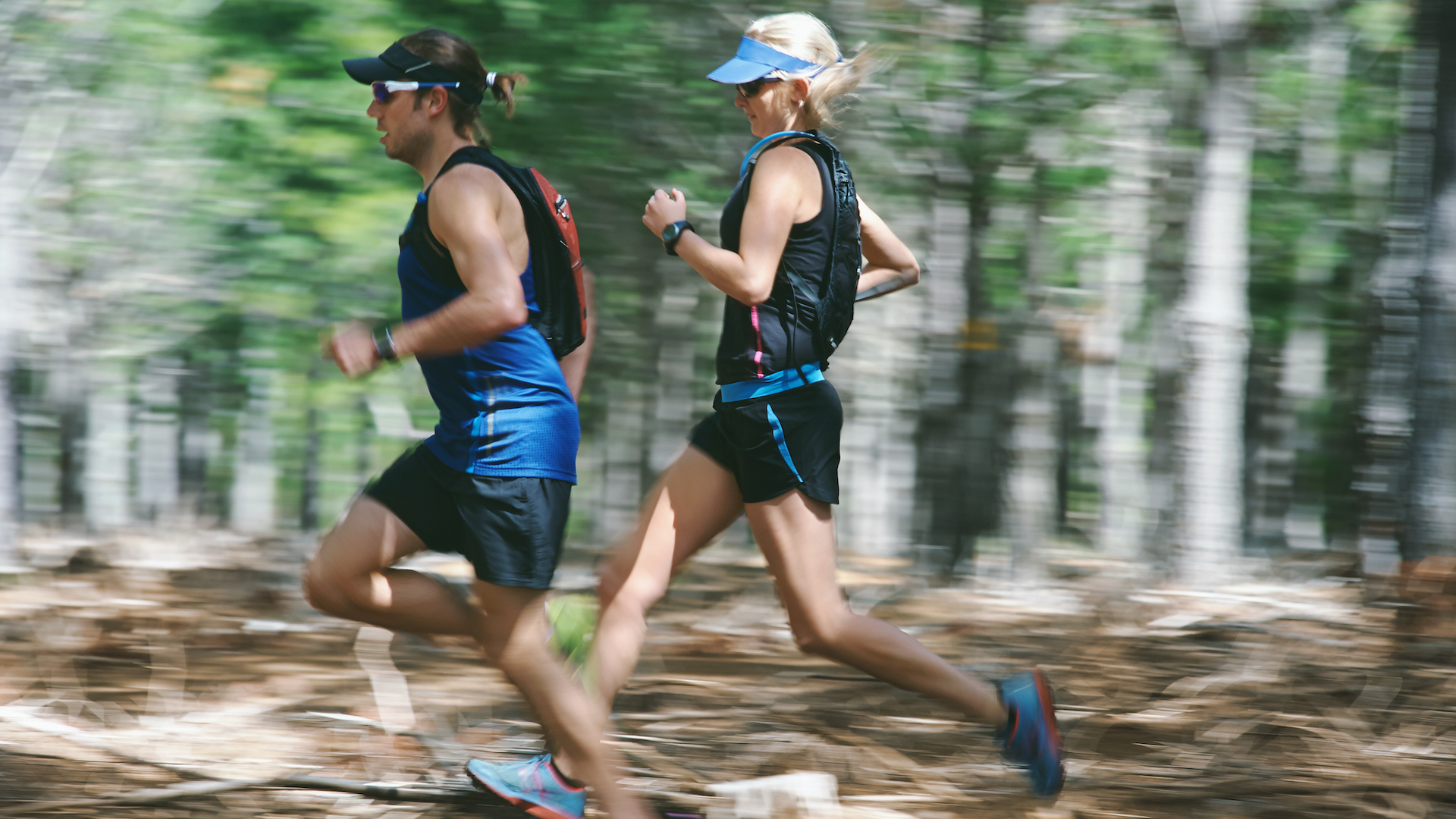
Serious runners know that a big part of running is drinking and eating — for real. Running is so much easier when you have a reliable source of water and a snack every 45 minutes or so. If not, you might, you know, pass out. Or die. So, it begs the question: How do you keep sustained for extended periods of time when you’re literally on the run? The answer is a running backpack.
A hydration pack allows you to hold everything you need to survive an hours-long activity. It holds not just a hydration system, but also snacks and desirable items like a phone, keys, an ID, and even a jacket.
While most running backpacks have a lot in common, they’re not all built the same. Some hold a little more, use more durable materials, or just fit better. And it’s not always obvious. That’s why we compiled this list of the best running backpacks.
- Best Overall: Salomon Advance Skin 12
- Best Budget: Dtown Hydration Backpack
- Best Minimalist: CamelBak Ultra Pro Running Hydration Vest
- Best for Women: Osprey DYNA 1.5
- Best for Marathons: CamelBak Zephyr Vest
- Best for Commuting: Nike Run Commuter Backpack 15L
Best Overall
Salomon Advance Skin 12
Best Budget
Dtown Hydration Backpack
Best Minimalist
CamelBak Ultra Pro Running Hydration Vest
Best for Women
Osprey DYNA 1.5
Best for Marathons
CamelBak Zephyr Vest
Best for Commuting
Nike Run Commuter Backpack 15L
Things to consider before buying a running backpack
Fit and comfort
The very most important thing to consider when buying a running backpack is fit and comfort. While my ego would thrive if I learned our readership trusted my opinions and assessments so much that they were willing to buy running backpacks sight unseen, I think it’s a bad move. This is, for sure, a try-before-you-buy item.
If the running backpack does not fit well, you are going to risk being miserable on your run. If possible, find a seller who will let you throw a couple of items into the running backpack and jog around the store for a few minutes. At the very least, try it on and see how easily the straps work.
Running style
Know your own running style and needs before you finalize your running backpack selection. You may find the running backpack you need for commuting to and from work may be very different from the running backpack you need for an ultramarathon or a trail run. Think about what you need to carry, how much protection is needed for what you are carrying, and what kind of weight distribution you may need.
While a nicely padded laptop sleeve might be completely irrelevant to you on a running backpack you use for ultramarathons in Death Valley, it might be critical if you are getting your miles in running to and from your university or place of work.
Straps
Straps are the close cousin of fit. I am setting straps into an individual section because they are that important.
The location and padding of the straps are critical elements of the design of the running backpack. The shoulder straps are going to, well, shoulder the weight of the bag. They should be padded enough to keep the straps from digging into your shoulders, but without being unnecessarily bulky.
The running backpack should also have a chest strap. The purpose of the chest strap is to allow you to lift the weight off your shoulders and redistribute it across your chest. The chest strap has to be easily adjustable and secure. It also needs to be able to be adjusted along the shoulder straps so you have at least some control over the height of the strap.
Compression straps are not a must-have item, but they are certainly a nice-to-have item. The ability to cinch your bag nicely and snugly around whatever you are carrying can make a significant difference in the comfort and stability of the backpack when you are running.
Water capacity
Not every running backpack has a space for a hydration bladder, but the vast majority do. Some come equipped with bladders and others just provide a space where a hydration bladder can go if you so desire. The upside to a running backpack that does not provide a hydration bladder is you save money if you: (a) don’t commonly use a hydration bladder for running, or (b) you already have a perfectly good hydration bladder from another pack and you want to use it with different platforms.
It is important, though, to consider the capacity of the bladder the running backpack you choose can carry. If you need a massive water source for your long-distance runs, ensure the running backpack you purchase can comfortably hold the bladder you need.
Other running backpacks have pockets to hold water bottles or collapsable water flasks. If that is your preference for the amount of water you need or the accessibility of the water sources, that may be something to look for when you are selecting a running backpack to purchase.
FAQs about running backpacks
Q: Is running with a weighted backpack bad for you?
A: This one is a little tricky. In military training, we were taught when training for schools which had walking long distances under a weighted ruck and a time limit, you should never run with a weighted rucksack in training. The caveat, however, was you might need to run during the school event to meet the time requirement. Running under weight creates the potential for a knee injury. Running reduces some of the stability you have when walking.
Running is inherently high-impact, while walking is low-impact. I would not recommend running under a weighted backpack, but consult an orthopedic professional if you are considering implementing weighted backpack runs into your fitness plan.
Q: How much do running backpacks cost?
A: Running backpacks can range in price from as low as $65 for the more economical and no-frills running backpacks, upwards to $150 for the more high-end running backpacks. If you need or want a hydration bladder and you are purchasing a running backpack that does not come with one, you will need to factor the additional cost into your purchase plans.
Q: How do I clean my running backpack?
A: A running backpack can be easily cleaned with some basic cleaning items. The first thing to do is to take a firm bristle brush and scrub the outside of the running backpack to knock loose any large concentrations or ground-in dirt. Then, fill a bucket or sink with lukewarm water and mild detergent, preferably scent-free. Submerge the backpack and use the bristle brush to scrub the exterior and interior. Rinse the running backpack with a hose or by refilling the bucket or sink with fresh water. Rinse until the bag has no residual soap. Hang to dry or lay the backpack out on a dry surface in direct sunlight.
Q: How do I stop my running backpack from bouncing when I run?
A: Refer to the paragraph above regarding fit and the one regarding straps. The best way to keep your bag from bouncing around too much when you run is to ensure you have the straps pulled snugly enough for your body type. Proper packing is critical, too. Finding the right load-out for your bag may take some time and experimentation, but one key factor is to ensure the contents of your running backpack are not just thrown around loosely within the bag.
Final thoughts
While there are plenty of options for running backpacks, if you could only pick one, you can’t go wrong with the Salomon Advance Skin 12. The smart design includes breathable and durable fabrics, and plenty of storage space for everyday items.
Methodology
In order to properly evaluate the different products featured in this review, I perused a multitude of sites and sources related to running backpacks. Many of these sites were other review-based sites that provided information and feedback about the different products on the market. My preference is to dig deeper into sites authored by specific subject matter experts.
In addition to experts, I dug through a number of customer reviews. Customer reviews can be tough because sometimes they are not as clearly written as I would like, and sometimes you have to dig through and make sure what a customer doesn’t like is related to the product versus the purchasing experience. As an example, I am not going to dissuade a reader from purchasing a particular product when it becomes evident the complaint was about a delivery taking too long or a store clerk being rude.
Additionally, in the case of the Salomon Advance Skin 12 running backpack, I am fortunate enough to own one, so I dug it out and did a series of runs with a variety of load-outs and configurations to test and evaluate the comfort and versatility. This methodology was challenging because of a major orthopedic surgery I had last year, but it was helpful and gave me a reason to force in some extra runs.
Task & Purpose and its partners may earn a commission if you purchase a product through one of our links. Learn more about our product review process.
